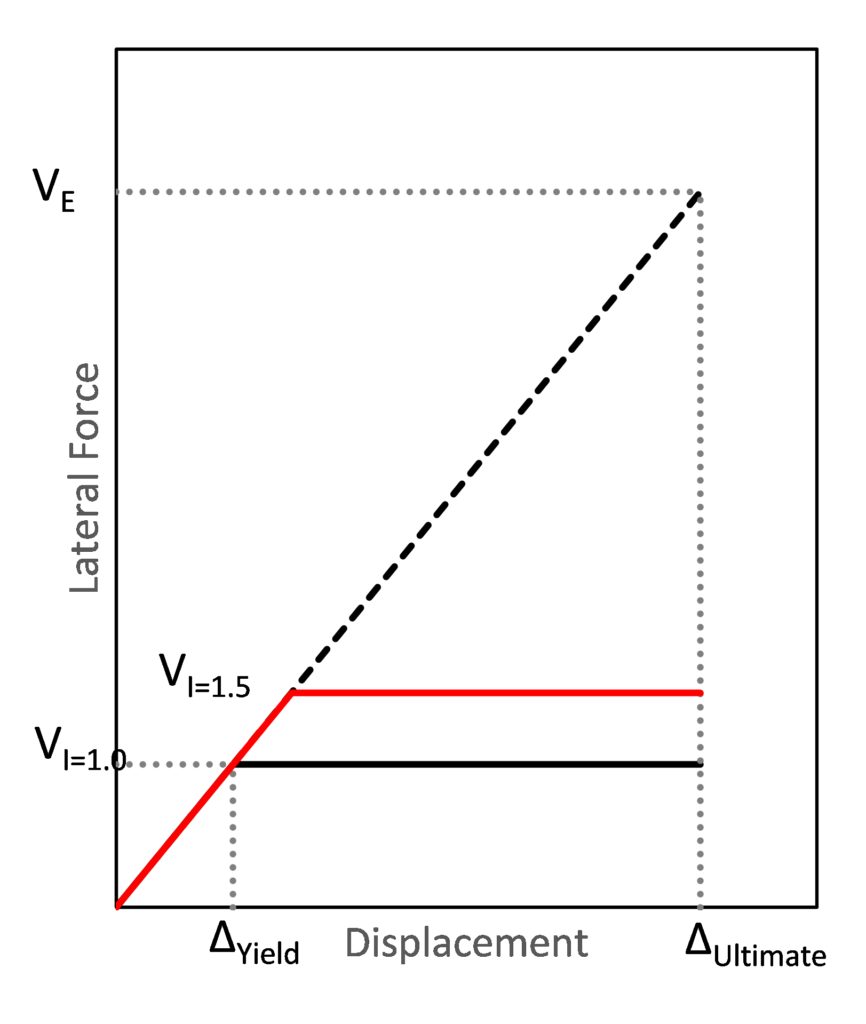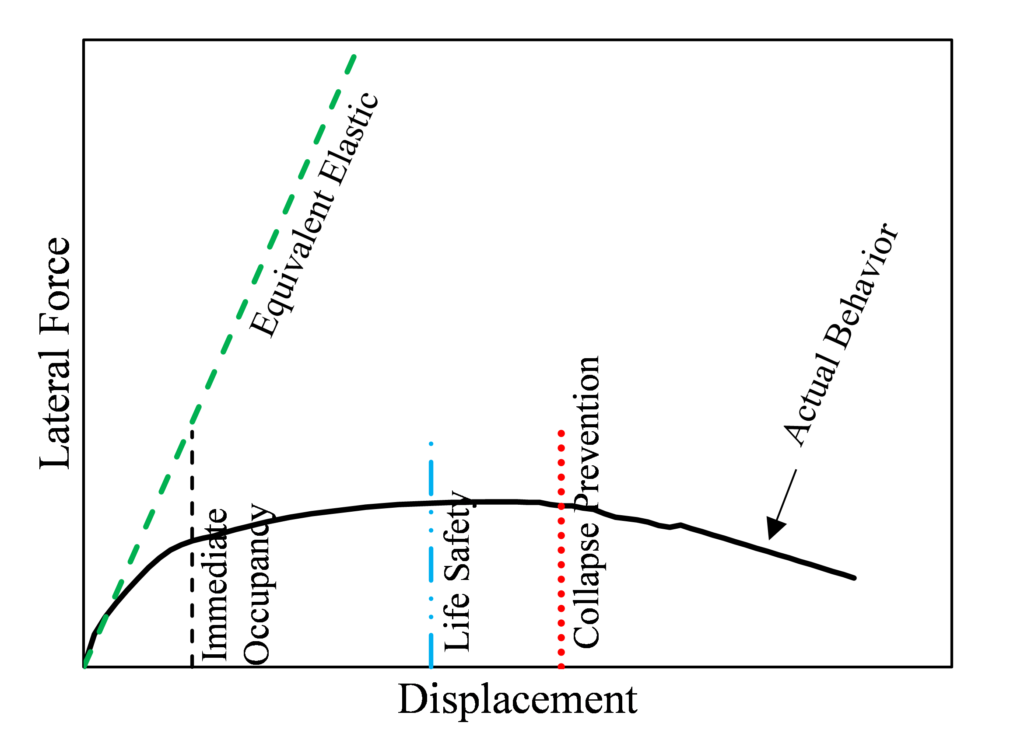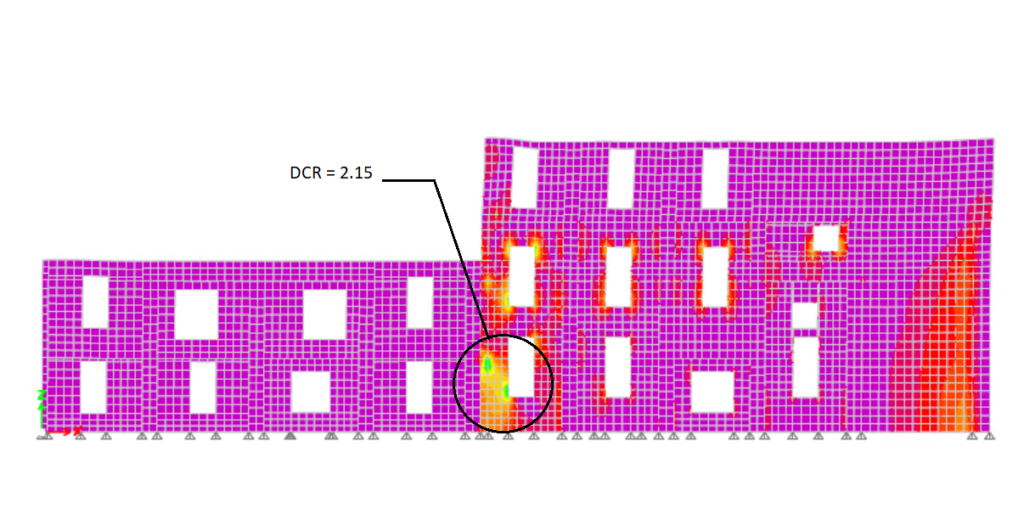The COVID-19 pandemic has shown us again what happens when the community is not ready for natural disasters we already expect. Though COVID-19 has overshadowed many things, Utahns will have a hard time forgetting the recent earthquakes. Seismic resilience of communities is a topic discussed often. It includes building seismically resilient structures, seismic evaluations, retrofits of existing structures, and communicating seismic risk to owners/stake holders. As structural engineers it is our responsibility to educate everyone about how we design structures, as well as offer our best recommendations.
Higher seismic performance is just 5-10% additional cost in terms of material, but it saves the owners a lot more in terms of continuous business operation and the most important, saving lives.
The primary focus of the current building codes (including ASCE 7-2016) is to ensure life safety. Continued operation of the building and reduced economic and social costs are a secondary focus. It is up to the owner, with guidance from the architect, to involve these in design.
Current Design Philosophy (Force-Based Design)
Current building codes prescribe a “force-based design” methodology, which assumes that failure of structural components is governed by the force. The limits of the capacities on structural components is still evolving and is the best/safe guess by the ASCE design code committee to keep the “Elastic Design” procedure alive. Almost all the building design codes prescribe an Elastic Design procedure to keep workflow simple and efficient. What this means is that engineers do not have to think about how the structure and the components involved in the “Seismic Resisting Force System” (SRFS) deform after yielding. Also, the seismic forces are considered as equivalent static forces instead of dynamic “inertial” force, which they really are.
In simple words, as shown in Fig. 1-a, the Equivalent Linear Static Force (ELF) procedure estimates the Equivalent Static Seismic Force (VE) and recommends to reduce it by a “force reduction factor” (R), which is dependent on the building type (ie. concrete shear wall, BRB frame, etc.), to get the Elastic Design seismic force. The elastic deflection in the structure due to the reduced design force and the inherent stiffness is then amplified by a “deflection amplification factor” (Cd) to estimate the ultimate displacement of the roof of the structure.


Fig. 1 Elastic seismic force and prescribed design forces at two different “Important Factors.”
However, the actual behavior of the building is very different (Fig. 1-b) than the assumed bi-linear behavior (Fig. 1-a). Multiple components of the building yield (deform beyond elastic range to accumulate permanent damage) at different times. The progression of yielding in these components is crucial in order for the building to perform at its best in an earthquake. Imagine pulling a steel chain at both ends and suddenly a link starts to deform, it will keep accumulating damage in the same link until another chain is attached in parallel. In that case, the force will be transferred to the stronger, non-damaged chain. A building’s seismic force resisting system can be assumed to be a complex web of these chains, connected in a combination of series. Which component yields first will play a big role in how the system performs.
Let’s look at another example. If you were a coach of a soccer team, you wouldn’t assign just any player to a forward or a defense position. A player at forward position should be good at running long stretches while a player at defense position should be good at tackling/diverting the incoming opposition player with a good judgement capability. Also, a player eager to run with the ball every time should not be a goal keeper.
Performance-based seismic design is all about selecting a best team of seismic force resisting members for a building so that an optimum seismic performance can be achieved.

Fig. 2 Looking for damage “hotspots” in an unreinforced masonry building for seismic retrofit.
Performance-Based Seismic Design & Code Definitions
Performance-Based Seismic Design (PBSD) is a methodology which involves evaluating structures for a given hazard that said structure is likely to experience by taking into account the uncertainties in quantification of hazard and structural properties. The building performance is quantified in terms that are meaningful to the decision makers. PBSD can be utilized for the following two purposes:
- Designing new buildings for a higher performance than the code prescribed level, and
- Non code-compliant buildings (i.e. not fitting any structural category described in the building code)
The first step to PBSD is to define a “performance objective” for the structure which is a combination of Hazard level and Performance level. Hazard curve indicates the probability of a given ground motion parameter (peak ground acceleration, magnitude etc.) that will be exceeded over a given period of time. Performance levels are discrete damage states that are a representation of acceptable thresholds of damage progression of a building.
The owner, with guidance from the architect, decides what performance level they want for their building. The structural engineer, while working with the geotechnical engineer, then decides the hazard level and proceeds with the structural design.

Fig. 3 A representation of damage at four “seismic performance levels”.
ASCE 41-17, the current governing building design code for PBSD, recommends different ground motion hazard levels for existing and new buildings. The building performance levels can broadly be categorized in Immediate Occupancy, Life Safety and Collapse Prevention.
Hazard Levels:
Basic Safety Earthquake is the term used in ASCE-41 to represent the earthquake to which a building is expected to perform at the expected performance level.
BSE-2E: 5% probability of exceedance in 50 years, for existing buildings
BSE-1E: 20% probability of exceedance in 50 years, for existing buildings
BSE-2N: 2% probability of exceedance in 50 years, for new buildings
BSE-1N: 75% of BSE-2N, for new buildings
In general, the target seismic hazard levels are higher for new buildings as compared to the existing buildings.
A building’s performance can be categorized as structural and non-structural.
Structural Performance Levels:
There are various performance levels that can be chosen.
S1- Immediate Occupancy: Building is safe to reoccupy, no reduction in strength.
S2 – Damage Control: Half way between S1 and S3.
S3 – Life Safety: Structure has damaged components, retains enough strength to prevent collapse in aftershocks.
S4 – Limited Life Safety: Half way between S3 and S5.
S5 – Collapse Prevention: Structure has damaged components and supports the gravity load, does not have enough strength to prevent collapse in subsequent aftershocks.
There are also performance criteria to choose from for non-structural damage, such as damage to electrical, mechanical and architectural components.
N-A: Operational, no damage and the building is safe to reoccupy.
N-B: Position Retention, no immediate functioning of components but all non-structural components remain in place, utility connections are intact, life safety systems such as emergency stairs, fire protection system remain functional for immediate use.
N-C: Life Safety, Damage to the components does not pose a life threat.
N-D: Hazard Reduced, Damage to low hazard components post a life threat to people (falling hazard) but high hazard components (oil, steam etc.) are anchored and do not pose a life threat.
Since a building’s seismic resiliency depends on both structural and non-structural components, Performance-Based Seismic Design aims for the same. A common misconception is that it costs a lot more to design better seismically performing buildings, but that is not completely true. Higher seismic performance can save owners a lot more in terms of continuous business operation and the most important, saving lives.
At Dunn Associate, Inc., we want to educate our clients and colleagues about how we design structures and offer safe, cost-effective, and innovative recommendations.
Reach out to us if you want a building with higher performance.

Anurag is one of our incredible engineers. He loves to cook and make music with his wife. His day starts with making Indian chai tea for all the family members.
“I am happiest when I am making music with my wife and spending time with my family.”